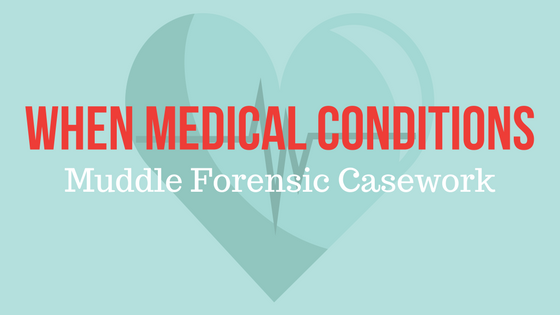Picture yourself relaxing at home watching your favorite television show. Your feet are up, all of your chores are done, and the house is quiet. Maybe you’ve got your favorite ice-cold drink sitting on the table next to you and a pizza on the way. Life is good! Except, now there’s an insistent knocking at the door. It seems to you that the pizza delivery guy is pretty impatient, but when you open the door, you are shocked to see a couple of unexpected faces. It’s not pizza – it’s the police, and they’ve got a warrant for your arrest! The next few months are a blur and before you know it you’re standing trial for a murder you didn’t commit. You insist that you’re innocent until your voice is hoarse, but they found your DNA at the scene. How can it be that your perfect night took such a sharp turn?
As he digs into your past more, an enterprising detective discovers that you had once been a stem cell donor. With a triumphant shout, he declares that you weren’t the murderer after all. It was the transplant recipient who had committed the crime. He was a chimera!
written by: Tara Luther, Promega
The scenario depicted above sounds like the plot of a crime drama. The odds are slim that this would actually happen, but while it’s unlikely, you as a forensic scientist may one day work with a sample from a chimera. In November of 2017, Dr. Ashley Anderson, Chief Medical Officer at Promega and Medical Director at the City of Madison Police Department presented a webinar where he explained how a person could become a chimera and how this can impact your work.
Chimerism in humans occurs when there are two genetically distinct cell lines present. Generally, this happens after one of two procedures is performed; either a patient recently received a blood transfusion resulting in temporary chimerism, or they were the recipient of a bone marrow transplant.
A bone marrow transplant is a procedure where hematopoetic cells (those that generate red or white blood cells) are given to a recipient with the intention of repopulating or replacing their hematopoetic system in total or part. These are known as stem cells, because, when taken from the bone marrow, they are able to alter themselves and can constitute all of the different cells needed in order to have blood circulate or to generate an immune response. A patient may need a transplant when their own bone marrow can’t produce these hematopetic cells. Conditions that are currently considered for stem cell transplants include: Leukemia, Mylodysplasic Syndrome, Non-Hodgkin’s Lymphoma, Multiple Myeloma, various cancers, and some autoimmune diseases. Each year, there are 50,000 bone marrow transplant procedures performed, with a growth rate of 10 – 20% year over year.
There are two different versions of bone marrow transplants that are performed; one using complete conditioning (all of the recipient’s existing bone marrow population is wiped out through chemotherapy or whole body radiation prior to transplant) or partial conditioning (partial destruction of a patient’s bone marrow cells). Complete bone marrow replacement results in individual whose blood cells have the donor’s DNA type, while partial conditioning results in a mixed profile of the donor and the recipient.
As a forensic scientist, you can expect to see chimerism attributes differ depending on the sample you analyze.
Blood:
Profiles taken from blood samples may consist of 100% donor cells after a complete conditioning transplant. As mentioned earlier, a mixed profile would be seen for recipients of a partial conditioning transplant.
Buccal Swabs/Mouthwash:
Blood cells serve as the preferred DNA source in mouthwash samples, and cannot be removed by epithelial cell separation. Mouthwash samples contain high amounts of donor DNA, and may be completely derived from donor DNA. Buccal swabs contain donor DNA, but in much lower amounts (~21%).
Fingernails:
You can expect to see a coexistence of donor pattern in 72-89% of total STR areas, with a median level of donor chimerism at 22%.
Hair Follicles:
Initial studies suggested hair follicles remain exclusively recipient type despite complete donor chimerism in blood, but subsequent studies suggest hair does display significant chimerism.
Semen and Sperm:
For the most part, these samples will reflect the recipient genetic profile, though it should be noted that patients who have received a transplant are frequently left sterile by the chemotherapy regime.
While chimerism is currently less common than twinning, it’s not impossible that you will come across it during your lifetime, especially as these procedures become more common. In his webinar, Dr. Anderson also explores how television shows depicting these cases may impact jurors and lays out some actionable steps that scientists can take to help mitigate this. To view the full webinar, visit Forensic Magazine’s website.
WOULD YOU LIKE TO SEE MORE ARTICLES LIKE THIS? SUBSCRIBE TO THE ISHI BLOG BELOW!
SUBSCRIBE NOW!


